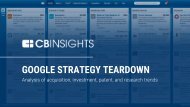mit_impact_full_report
mit_impact_full_report
mit_impact_full_report
Create successful ePaper yourself
Turn your PDF publications into a flip-book with our unique Google optimized e-Paper software.
MIT—Its Unique History, Culture, and Entrepreneurial Ecosystem<br />
alumnus Richard Morse ’33 (later the first teacher of<br />
entrepreneurship at MIT) to exploit advances in lowtemperature<br />
physics. NRC later created several<br />
companies from its labs, retaining partial ownership<br />
in each as they spun off, the most important being<br />
Minute Maid orange juice, later sold to Coca-Cola.<br />
NRC’s former headquarters building, constructed<br />
adjacent to MIT on Memorial Drive in Cambridge,<br />
now houses the classrooms of the MIT Sloan School<br />
of Management. Incidentally, long before the<br />
construction of Route 128, Memorial Drive used to<br />
be called “Multi-Million Dollar Research Row”<br />
because of the several early high-technology firms<br />
next to MIT, including NRC, Arthur D. Little Inc., and<br />
Electronics Corporation of America. The comfortable<br />
and growing ties between Boston’s worlds of<br />
academia and finance helped create bridges to the<br />
large Eastern family fortunes—the Rockefellers,<br />
Whitneys, and Mellons, among others—who also<br />
invested in early Boston startups. Although these<br />
funds existed, they were not available in generous<br />
amounts. Even in 1958, Ken Olsen ’50 and Harlan<br />
Anderson ’53 had to surrender more than 70 percent<br />
of startup Digital Equipment Corporation (DEC) for<br />
the $70,000 they received from AR&D. Other aspects<br />
of the surrounding infrastructure also were slow in<br />
happening. By and large, lawyers were uninformed<br />
about high-tech deals, and general law firms had no<br />
specialists in intellectual property. As late as the early<br />
1980s, the MIT and Harvard co-founders of Zero<br />
Stage Capital, Boston’s first “seed capital” fund,<br />
eventually found Paul Brontas, the senior partner of<br />
Boston’s then-leading law firm Hale & Dorr, to be<br />
among the only lawyers in town who knew how to<br />
set up the complex structure of a venture capital firm.<br />
By the end of the 1940s, when space constraints<br />
in the inner cities of Boston and Cambridge might<br />
have begun to be burdensome for continuing growth<br />
of an emerging high-technology industrial base, the<br />
state highway department launched the building of<br />
Route 128, a circumferential highway (Europeans and<br />
Asians would call it a “ring road”) around Boston<br />
through pig farms and small communities. Route 128<br />
made suburban living more readily accessible and land<br />
available in large quantities and at low prices. MIT<br />
Lincoln Lab’s establishment in 1951 in Concord,<br />
previously known only as the site of the initial 1776<br />
Lexington-Concord Revolutionary War battle with the<br />
British, “the shot heard round the world,” or, to<br />
some, as the home of Thoreau’s Walden Pond, helped<br />
bring advanced technology to the suburbs. Today<br />
Route 128, proudly labeled by Massachusetts as<br />
“America’s Technology Highway,” reflects the<br />
cumulative evidence of sixty years of industrial growth<br />
of electronics, computer, and software companies.<br />
Development planners in some foreign countries<br />
occasionally have been confused by consultants and/or<br />
state officials into believing that the once-convenient,<br />
now traffic-clogged Route 128 highway system<br />
actually caused the technological growth of the<br />
Greater Boston area. At best the Route 128 highway<br />
itself, later followed by the more distant Route 495<br />
circumferential road, has been a moderate facilitator<br />
of the development of this high-technology region.<br />
More likely the so-called “Route 128 phenomenon” is<br />
a result and a beneficiary of the growth caused by the<br />
other influences identified earlier.<br />
Throughout this period since World War II (and<br />
to a lesser extent prior to that time), the sometimesoverlooked<br />
but in reality quite vital formation of hightech<br />
companies in the Greater Boston area, as well as<br />
in most other high-tech regions in the United States,<br />
has been aided power<strong>full</strong>y, even if indirectly, by<br />
government research funding. One visible example<br />
at MIT and nearby was the foundation for the<br />
modern computer industry, which benefited from<br />
hundreds of millions of dollars of defense research<br />
into semiconductors and electronics, much of it spent<br />
in New England.<br />
MIT depends on federal agencies for<br />
approximately 75 percent of its $587.5 million of<br />
on-campus-sponsored research. Another $636 million<br />
of research and development is at MIT Lincoln<br />
Laboratories, which MIT runs for the Air Force.<br />
(Ken Olsen, founder of Digital Equipment<br />
Corporation, worked on computer research and<br />
development there.) A very early (1964) study by<br />
Roberts documented forty-seven companies that<br />
ENTREPRENEURIAL IMPACT: THE ROLE OF MIT 33



